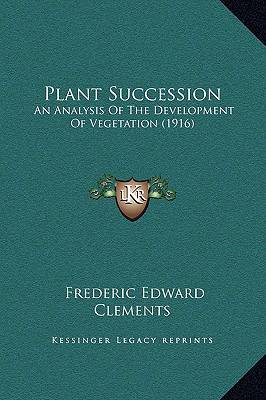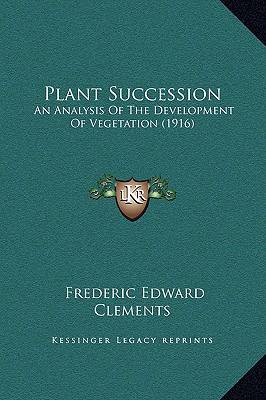
- Afhalen na 1 uur in een winkel met voorraad
- Gratis thuislevering in België vanaf € 30
- Ruim aanbod met 7 miljoen producten
- Afhalen na 1 uur in een winkel met voorraad
- Gratis thuislevering in België vanaf € 30
- Ruim aanbod met 7 miljoen producten
Zoeken
Plant Succession
An Analysis Of The Development Of Vegetation (1916)
Frederic Edward Clements
Hardcover | Engels
€ 86,95
+ 173 punten
Omschrijving
Plant Succession: An Analysis Of The Development Of Vegetation (1916) is a comprehensive study of the process of plant succession, written by Frederic Edward Clements. The book explores the way in which plant communities change over time, from the initial colonization of a new area by pioneer species to the establishment of a stable climax community. Clements draws on a wide range of examples from different ecosystems, including forests, grasslands and wetlands, to illustrate the principles of plant succession. He also discusses the role of environmental factors, such as soil type, climate and disturbance, in shaping the development of vegetation. The book is structured in a logical and systematic way, with each chapter building on the previous one. Clements begins by introducing the concept of plant succession and outlining the stages of development. He then goes on to discuss the different types of plant communities that can be found at each stage, and the factors that influence their composition. Throughout the book, Clements emphasizes the importance of understanding plant succession for ecological management and conservation. He argues that by studying the way in which plant communities develop, we can better understand how to manage ecosystems in a way that promotes biodiversity and resilience. Overall, Plant Succession: An Analysis Of The Development Of Vegetation (1916) is a seminal work in the field of ecology, and remains a valuable resource for researchers and students alike. Its clear and concise style, combined with its wealth of examples and insights, make it a must-read for anyone interested in the dynamics of plant communities.This scarce antiquarian book is a facsimile reprint of the old original and may contain some imperfections such as library marks and notations. Because we believe this work is culturally important, we have made it available as part of our commitment for protecting, preserving, and promoting the world's literature in affordable, high quality, modern editions, that are true to their original work.
Specificaties
Betrokkenen
- Auteur(s):
- Uitgeverij:
Inhoud
- Aantal bladzijden:
- 652
- Taal:
- Engels
Eigenschappen
- Productcode (EAN):
- 9781169366053
- Verschijningsdatum:
- 10/09/2010
- Uitvoering:
- Hardcover
- Formaat:
- Genaaid
- Afmetingen:
- 178 mm x 254 mm
- Gewicht:
- 1338 g

Alleen bij Standaard Boekhandel
+ 173 punten op je klantenkaart van Standaard Boekhandel
Beoordelingen
We publiceren alleen reviews die voldoen aan de voorwaarden voor reviews. Bekijk onze voorwaarden voor reviews.








